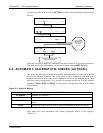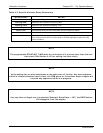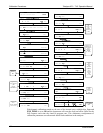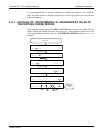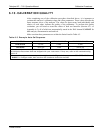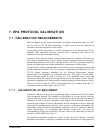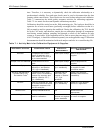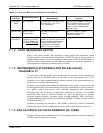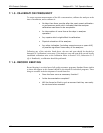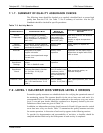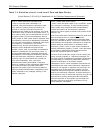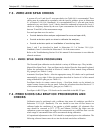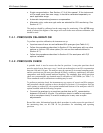
187
7. EPA PROTOCOL CALIBRATION
7.1. CALIBRATION REQUIREMENTS
When configured for SO
2
measurement mode or multigas measurement mode, the T101
may be used for EPA SLAMS monitoring. In these cases it must be calibrated in
accordance with the instructions in this section.
At the writing of this manual there is no EPA requirements for the monitoring of H
2
S or
published H
2
S calibration protocols, therefore these instruction only discuss the
calibration of the SO
2
measurement feature.
In order to insure that high quality, accurate measurements are obtained at all times, the
T101 must be calibrated prior to use. A quality assurance program centered on this aspect
and including attention to the built-in warning features of the T101, periodic inspection,
regular zero/span checks and routine maintenance is paramount to achieving this.
In order to have a better understanding of the factors involved in assuring continuous and
reliable information from the T101, it is strongly recommended that Publication No. PB
273-518 Quality Assurance Handbook for Air Pollution Measurement Systems
(abbreviated, Q.A. Handbook) be purchased from the NTIS (phone 703-605-6000).
Special attention should be paid to Section 2.9 of the handbook which deals with
fluorescence based SO
2
analyzers and upon which most of this section is based. Specific
regulations regarding the use and operation of ambient hydrogen sulfide analyzers can be
found in 40 CFR 50 and 40 CFR 58. Both publications are available from the U.S.
Government Printing Office (phone 202-512-0327).
7.1.1. CALIBRATION OF EQUIPMENT
In general, calibration is the process of adjusting the gain and offset of the T101 against
some recognized standard. The reliability and usefulness of all data derived from any
analyzer depends primarily upon its state of calibration. In this section the term dynamic
calibration is used to express a multipoint check against known standards and involves
introducing gas samples of known concentration into the instrument in order to adjust the
instrument to a predetermined sensitivity and to produce a calibration relationship. This
relationship is derived from the instrumental response to successive samples of different
known concentrations. As a minimum, three reference points and a zero point are
recommended to define this relationship. The true values of the calibration gas must be
traceable to NIST-SRM's See Table 7.1.
All monitoring instrument systems are subject to some drift and variation in internal
parameters and cannot be expected to maintain accurate calibration over long periods of
07266B DCN6485



